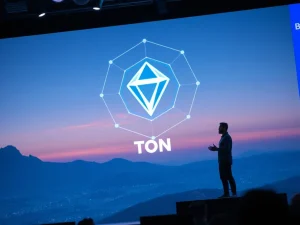DeepSeek AI Unleashes Powerful Open-Source Math Model Prover V2

The world of artificial intelligence is constantly evolving, with new models pushing the boundaries of what’s possible. Following its significant impact with the R1 model, DeepSeek AI is once again making waves. They’ve just released a new open-source model, Prover V2, specifically designed to tackle complex mathematical theorem verification. This move is particularly interesting for anyone following the rapid advancements in AI and the increasing accessibility of powerful AI tools.
What is DeepSeek AI’s Prover V2?
DeepSeek AI, a Chinese AI development company, has unveiled its latest creation: Prover V2. Released under a permissive open-source MIT license, this large language model (LLM) is built with a singular focus: verifying mathematical proofs. Uploaded to Hugging Face on April 30th, Prover V2 represents a significant step in applying AI to formal mathematics.
Key details about Prover V2:
- It boasts a massive 671 billion parameters, making it substantially larger than its predecessors, Prover V1 and V1.5.
- The model is trained to work with formal logic systems, particularly using the Lean 4 programming language, a standard tool in theorem proving.
- The goal is to compress mathematical knowledge, enabling the model to generate and verify proofs, which could greatly assist research and education in mathematics.
Understanding AI Models and Their Accessibility
When we talk about an AI ‘model’ or ‘weights’, we’re referring to the core component that allows the AI to function. These are the files containing the learned parameters that enable the AI to process information and perform tasks. For state-of-the-art AI Models, especially those with a high parameter count like Prover V2, running them locally requires significant hardware resources – specifically large amounts of RAM or VRAM (GPU memory) and processing power.
Prover V2’s weights, for example, weigh around 650 gigabytes. To make models like this more manageable, techniques like quantization are used. Quantization reduces the precision of the model’s parameters, effectively shrinking the file size. Prover V2’s weights have been quantized to 8-bit floating point precision, roughly halving the storage requirement compared to the more common 16-bit precision. While this approximation can sometimes slightly affect performance, it significantly improves accessibility.
Another crucial technique for making powerful AI models available to more users is distillation. This involves training a smaller ‘student’ model to mimic the behavior of a larger ‘teacher’ model. This retains much of the performance while drastically reducing the parameter count and hardware requirements. DeepSeek’s previous R1 model, known for its strong performance, was distilled into much smaller versions, some even runnable on mobile devices.
Why is Open Source AI a Big Deal?
The decision to release powerful AI models as Open Source AI is a topic of considerable debate. On one hand, it’s seen as a democratizing force, putting advanced AI tools directly into the hands of researchers, developers, and the public without requiring reliance on large corporate infrastructure. This fosters innovation and allows for independent verification and development.
On the other hand, there are valid security concerns. Releasing the raw model weights means the developing company loses direct control over how the AI is used, potentially enabling malicious applications. DeepSeek’s release of its powerful R1 model openly was seen by some as a significant moment, comparable to a ‘Sputnik moment’ in the AI race, highlighting the rapid advancements happening outside traditional tech hubs.
However, proponents argue that the benefits of Open Source AI outweigh the risks, promoting transparency and collaborative progress. DeepSeek’s continued commitment to open releases, following in the footsteps of initiatives like Meta’s LLaMA series, reinforces the idea that open AI development is a serious and competitive path forward, challenging the dominance of closed, proprietary models like those from OpenAI.
Prover V2’s Potential Impact
While detailed research papers on Prover V2’s performance are eagerly awaited, its focus on math theorem verification is significant. Formal proof verification is a challenging task, currently requiring highly specialized human expertise. An AI model capable of assisting in this process could accelerate mathematical research, improve the reliability of proofs, and even aid in teaching complex mathematical concepts by providing automated verification tools. The release of such a large and specialized model under an open license allows the global AI and mathematics communities to experiment, build upon, and contribute to this exciting area.
In Conclusion
DeepSeek AI’s release of Prover V2 is a notable event in the AI landscape. It underscores the increasing sophistication of specialized AI models and the ongoing trend towards open-source development. By providing a powerful tool focused on mathematical verification to the public, DeepSeek is not only contributing to the field of formal mathematics but also reinforcing the viability and importance of the open AI ecosystem. As techniques like quantization and distillation continue to improve, making these large AI Models more accessible, we can expect to see even more exciting applications emerge from the open-source community.









